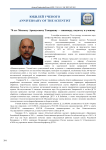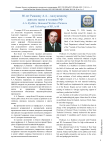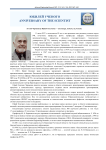Advanced Engineering Research (Rostov-on-Don) @vestnik-donstu
Статьи журнала - Advanced Engineering Research (Rostov-on-Don)
Все статьи: 1605
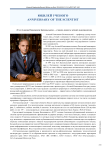
65 лет Алексею Николаевичу Бескопыльному - ученому, педагогу, эксперту и руководителю
Персоналии
Бесплатно
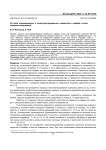
Ab initio моделирование и наноструктурирование поверхности карбида титана лазерным излучением
Статья научная
Изучены процессы наноструктурирования поверхности карбида титана под воздействием излучения Nd:YAG-лазера с длиной волны 1,06 мкм. Длительность лазерных импульсов - 40 нс, скорость перемещения луча - 10 мм/с. Плотность энергии излучения на поверхности карбида титана при частоте генерации 2000 Гц - 2,06÷6,36 Дж/см 2. Представлены результаты ab initio изучения атомной, электронной структуры и упругих характеристик карбида титана TiC и TiC 1-хO х (x = 0,25; 0,5; 0,75). Зонная структура TiC, рассчитанная с использованием теории функционала плотности, соответствует металлическому типу. Показано, что рассчитанные упругие характеристики карбида титана хорошо согласуются с известными теоретическими и экспериментальными оценками. Изучение топографии микроструктур на поверхности карбида титана с использованием метода атомной силовой микроскопии показало, что в зоне прямого лазерного воздействия шероховатость составила 0,254 мкм. Механические характеристики в зонах прямого воздействия лазерного луча и областей температурного влияния исследовались методом наноиндентирования. Установлен эффект наноструктурирования: после лазерного воздействия твердость поверхности карбида титана возрастает до 47,2 ГПа.
Бесплатно
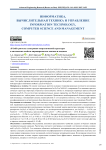
Статья научная
Введение. Соединения с лантаном и неодимом (La2Zr2O7 и Nd2Zr2O7) обладают низкой теплопроводностью, высокой диэлектрической проницаемостью и температурой плавления, стабильностью и устойчивостью к дефектам. Их можно применять для теплоизоляции металлических компонентов в турбинах и воздушных двигателях. Кроме того, указанные соединения широко исследуются с точки зрения развития материаловедения, особенно при совершенствовании лазерной техники и оптики. Однако физические свойства La2Zr2O7 и Nd2Zr2O7 недостаточно экспериментально изучены. Этот пробел призвано восполнить представленное исследование. Цель работы — модельные расчеты электронной структуры и оптических свойств La2Zr2O7 и Nd2Zr2O7. Материалы и методы. На основе модельных расчетов в рамках теории функционала плотности исследована электронно-энергетическая структура пироцирконатов La2Zr2O7 и Nd2Zr2O7, содержащих Zr и имеющих кристаллическую структуру пирохлора. В расчетах использовались взятые из литературы параметры кристаллической решетки La2Zr2O7. Из-за отсутствия экспериментальных данных параметры для Nd2Zr2O7 рассчитывались через минимизацию сил, действующих на атомы соединения. Применяется комбинированный обменно-корреляционный потенциал, учитывающий сильные взаимодействия d- и f-электронов атомов La и Nd с поправкой в форме модифицированного метапотенциала Беке-Джонсона. Для расчетов использовался пакет программ Wien2K. Результаты исследования. Получены плотности электронных состояний всех атомов исследованных соединений. Сравниваются рассчитанные плотности валентных электронных состояний соединений с экспериментальными рентгеновскими фотоэлектронными спектрами. При нулевой энергии рассчитаны значения оптических характеристик La2Zr2O7 и Nd2Zr2O7. Во-первых, это диэлектрическая проницаемость: для La2Zr2O7 — 8,4334, для Nd2Zr2O7 — 8,501. Во-вторых, преломление: для La2Zr2O7 — 2,904, для Nd2Zr2O7 — 2,916. В-третьих, отражение: для La2Zr2O7 — 23,786 %, для Nd2Zr2O7 — 23,935 %. Высокий оптический коэффициент поглощения (˃105 см–1) фиксируется в областях: от 5 до 14 эВ, от 14 до 28 эВ и от 28 до 40 эВ. Пиковые значения экстинкции приходятся на области от 5 до 13 эВ, от 14 до 28 эВ и от 28 до 40 эВ. Кристаллы La2Zr2O7 и Nd2Zr2O7 могут поглощать фотоны в широком диапазоне энергий (4–10 эВ). Обсуждение и заключение. Исследование дополнило представления о свойствах La2Zr2O7 и Nd2Zr2O7 новыми экспериментальными данными. Рассчитаны плотности электронных состояний и оптические спектры соединений La2Zr2O7 и Nd2Zr2O7. Это позволило объяснить особенности экспериментальных рентгеновских фотоэлектронных спектров соединений. В приближении модифицированного потенциала Беке-Джонсона получены значения ширин запрещенных полос соединений, соответствующие экспериментальным. Исследование относится к фундаментальным и может открыть перспективы создания более эффективных, надежных и функциональных материалов, лазерных и оптических устройств.
Бесплатно
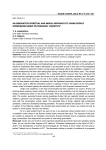
An innovative spiritual and moral approach to young people upbringing based on pedagogy logistics
Статья научная
The article presents some results of the theoretical analysis concerning the state of moral and spiritual development possessed by young people of our country. The obtained results of the investigation show the urgent necessity of radical changes in the sphere of young people breeding. The authors put forward the theoretically grounded outcome for changing the situation. The authors see success in the treated sphere in diverting educators attention to the achievements of the pedagogic logistics.
Бесплатно
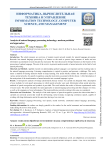
Analysis of natural language processing technology: modern problems and approaches
Статья научная
Introduction. The article presents an overview of modern neural network models for natural language processing. Research into natural language processing is of interest as the need to process large amounts of audio and text information accumulated in recent decades has increased. The most discussed in foreign literature are the features of the processing of spoken language. The aim of the work is to present modern models of neural networks in the field of oral speech processing.Materials and Methods. Applied research on understanding spoken language is an important and far-reaching topic in the natural language processing. Listening comprehension is central to practice and presents a challenge. This study meets a method of hearing detection based on deep learning. The article briefly outlines the substantive aspects of various neural networks for speech recognition, using the main terms associated with this theory. A brief description of the main points of the transformation of neural networks into a natural language is given.Results. A retrospective analysis of foreign and domestic literary sources was carried out alongside with a description of new methods for oral speech processing, in which neural networks were used. Information about neural networks, methods of speech recognition and synthesis is provided. The work includes the results of diverse experimental works of recent years. The article elucidates the main approaches to natural language processing and their changes over time, as well as the emergence of new technologies. The major problems currently existing in this area are considered.Discussion and Conclusions. The analysis of the main aspects of speech recognition systems has shown that there is currently no universal system that would be self-learning, noise-resistant, recognizing continuous speech, capable of working with large dictionaries and at the same time having a low error rate.
Бесплатно

Статья научная
Introduction. Slender structures of subsea energy production systems are under constant influence of currents and waves. Hydrodynamic loads result from the interaction of subsea pipelines, umbilicals, equipment supports with fluid flows, and lead to the vortex formation in the area behind the structures. Vortex-induced forces are the sources of the cyclic loading. They accelerate gradually the fatigue damage, which may result in a failure. One of the ways to reduce the loads on subsea structures is to alter the shape of a cross-section, taking into account the flow regime. Dependence of the resulting hydrodynamic loads on the cross-sectional shape and relative position of structures has not been studied in details for the uniform flow in the critical mode. The current work is aimed at filling this gap. The research objective is to consider the impact of the distance between the structures, and also, the presence of a D-shaped structure, placed upstream relative to the group of three cylinders of different cross-sectional shapes.Materials and Methods. The computational fluid dynamics approach was used in this work for numerical simulations of vortex-induced forces in the ANSYS Fluent software for cylinder with D = 0.3 m. Modelling was conducted with the Detached Eddy Simulation (DES) method, which combined advantages of the Reynolds-averaged Navier-Stokes equation (RANS) method and the Large Eddy Simulation (LES) method. The object of the research was the system of four structures in the 2D computational domain, which included the upstream D-shaped cylinder and the main group of three cylinders with the circular, squared and diamond shapes of the cross-section. The transient process was considered, where structures were under the influence of the uniform flow in the critical regime at Re = 2.5×10⁵.Results. Five sets of data were obtained in simulations for the time-dependent coefficients of the lift and drag forces: for the main system - of the D-shaped, circular, square and diamond structures, and also for the four systems - of only D-shaped, only circular, only square and only diamond shaped structures. Additional analysis was conducted for the effect of the distance between the structures on the amplitude of fluctuating hydrodynamic force coefficients. The obtained results are presented as time histories of coefficients of the lift and drag forces, frequency analysis and contours of velocity, pressure and vorticity fields. The results indicate a positive effect of the upstream D-shaped structure on reducing the drag force, acting on the central structure in the group of three cylinders located downstream.Discussion and Conclusion. The results of the performed studies facilitate the informed decisions regarding the arrangement of subsea structures in a group of four objects, depending on the cross-sectional shape and the distance between the structures. The upstream D-shaped structure provides reducing the hydrodynamic drag force acting on the central structure in the downstream group of three structures, thereby slowing the fatigue accumulation and increasing the time of safe operation.
Бесплатно
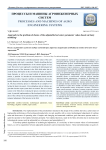
Статья научная
A problem of selecting the controlled parameter values of the combine harvester work tools is considered. Models describing the harvesting quality factor dependencies of the external agents are analyzed. The need of a new approach to modeling the technological adjustment process of the harvester in the field which takes into account the fuzzy information on the environmental factors, its approximate character, as well as an expert method of generating information, is justified. To describe the environmental factors and the performance indices, linguistic variables are introduced, their membership functions are developed, and production rules are formulated. The fuzzy inference process is illustrated by an example of selecting the beater rate speed. A knowledgebase and an inference engine that form the expert system basis are created. The use of such a system in the field allows reducing the process downtime and crop waste. A practical implementation of the developed model is the creation of the software for the automated problem solution of the technological adjustment of the harvester in the field.
Бесплатно
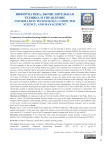
Comparison of machine learning models for coronavirus prediction
Статья научная
Coronavirus, also known as COVID-19, was first detected in Wuhan, China, in December 2019. It is a family of viruses ranging from the common cold to severe acute respiratory syndrome (SARS). The symptoms of such a virus are similar to those of a cold or seasonal allergies. Like other respiratory viruses, it is mainly transmitted through airborne droplets when coughing or sneezing. Therefore, the recognition of COVID-19 requires careful laboratory analysis, and the reduction of recognition resources is a major challenge. On 11 March, 2020, the World Health Organization (WHO) declared COVID-19, caused by SARS-CoV-2, a pandemic, as there had been an exponential increase in cases worldwide, and demand for intensive beds and related structures had far exceeded existing capacity. The first examples of this are the regions of Italy. Brazil registered the first case of SARS-CoV-2 on 02/26/2020. Transmission of the virus in this country shifted very quickly from imported cases to local and, finally, community missions, with the Brazilian federal government announcing national community transmission on 03/20/2020. As of March 23, in the state of São Paulo with a population of about 12 million people, where the Israelita Albert Einstein Hospital is located, 477 cases of the disease and 30 related deaths were registered, and on March 27, there were already 1223 cases of COVID-19 with 68 concomitant deaths. To slow the spread of the virus in the state of São Paulo, quarantines and social distancing measures were introduced. One of the motivations for this challenge is the fact that, in the context of an extensive healthcare system with the possible limitation of SARS-CoV-2 testing, it is not practical to test every case, and test results can only be used in testing the target subpopulation. The study objective is to build a model based on machine learning that can predict the detection of SARS-CoV-2 from medical data. For this, various classification models of machine learning are compared, and the best one to predict coronaviruses is determined. The comparison is based on individuals in class 1, i.e., those with a positive test. Therefore, it is required to determine the machine learning model with the best response and F1 score for class 1.Materials and Methods. An open-source data set from the Israelita Albert Einstein Hospital in São Paulo, Brazil, was taken as a basis. The following machine learning models were used for the study: RandomForests (RF), K-Nearest Neighbor (KNN), Support Vector Machine (SVM), Logistic Regression (LR), Decision Tree (DT) and AdaBoost (AB), as well as the 10-time cross-validation technique. Some machine learning performance measures, such as accuracy, recall, and F1 score were evaluated.Results. Out of a total of 5,644 people tested during the COVID-19 pandemic, 5,086 people tested negative and 558 people tested positive. At the same time, support for machine vectors showed the best results in detecting coronavirus with a recall of 75 % and an F1 score of 60 % compared to models: Random drill, KNN, LR, AB, and DT.Discussion and Conclusions. It was found that when using AB algorithms, greater accuracy is achieved, but the stability of the LSVM algorithm is higher. Therefore, it can be recommended as a useful tool for detecting COVID-19.
Бесплатно
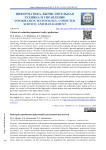
Criteria of evaluating augmented reality applications
Статья научная
Introduction. The field of augmented reality (AR) is growing rapidly and has great advances in interaction, navigation and tracking. Nowadays there are a lot of trends for AR applications in different areas (education, entertainment, business, medicine, etc.). However, there is a lack of research to provide the evaluating AR apps framework to support developers when creating suitable AR applications for specific needs. We provide a practical approach to quantify some of the AR applications features. We focus on the development of criteria for evaluating augmented reality applications. We discuss the criteria of choosing dimensions for that space such as standards for AR, tools for AR development, navigation and tracking, content management, usability. We provide analysis and evaluation of AR apps through each characteristic using guidelines which we have developed.Materials and Methods. An AR application is a software application that integrates digital visual, audio and other types of content into a real-world environment. The software quality and performance are the main characteristics of the application, which are key factors for AR applications. The analysis of scientific papers, documents and standards made it possible to determine characteristics that are the most significant quality indicators based on well-grounded users’ needs and demands.Results. The criteria we have developed for evaluating applications with augmented reality enable developers to create their own software products in stages, based on step-by-step requirements for them, evaluating the development process by characteristics. This approach will allow you to create high-quality software products using standardized, modern development tools.Discussion and Conclusions. In addition, developers will have a detailed understanding of each stage of creating the application and the necessary development tools and technologies to obtain the highest quality result. That will give an opportunity to decide on specific development tools, methods, models and technologies before starting work on a project. As a result, it will provide the final high-quality software product with good extensibility and compliance with the modern requirements of the digital industry market.
Бесплатно
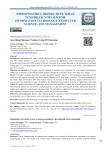
Describing pulmonary nodules using 3D clustering
Статья научная
Introduction. Determining the tumor (nodule) characteristics in terms of the shape, location, and type is an essential step after nodule detection in medical images for selecting the appropriate clinical intervention by radiologists. Computer-aided detection (CAD) systems efficiently succeeded in the nodule detection by 2D processing of computed tomography (CT)-scan lung images; however, the nodule (tumor) description in more detail is still a big challenge that faces these systems.Materials and Methods. In this paper, the 3D clustering is carried out on volumetric CT-scan images containing the nodule and its structures to describe the nodule progress through the consecutive slices of the lung in CT images.Results. This paper combines algorithms to cluster and define nodule’s features in 3D visualization. Applying some 3D functions to the objects, clustered using the K-means technique of CT lung images, provides a 3D visual exploration of the nodule shape and location. This study mainly focuses on clustering in 3D to discover complex information for a case missed in the radiologist’s report. In addition, the 3D-Density-based spatial clustering of applications with noise (DBSCAN) method and another 3D application (plotly) have been applied to evaluate the proposed system in this work. The proposed method has discovered a complicated case in data and automatically provides information about the nodule types (spherical, juxta-pleural, and pleural-tail). The algorithm is validated on the standard data consisting of the lung computed tomography scans with nodules greater and less than 3mm in size.Discussion and Conclusions. Based on the proposed model, it is possible to cluster lung nodules in volumetric CT scan and determine a set of characteristics such as the shape, location and type.
Бесплатно
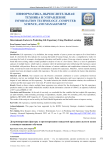
Determinants factors in predicting life expectancy using machine learning
Статья научная
Introduction. Life expectancy is, by definition, the average number of years a person can expect to live from birth to death. It is therefore the best indicator for assessing the health of human beings, but also a comprehensive index for assessing the level of economic development, education and health systems . From our extensive research, we have found that most existing studies contain qualitative analyses of one or a few factors. There is a lack of quantitative analyses of multiple factors, which leads to a situation where the predominant factor influencing life expectancy cannot be identified with precision. However, with the existence of various conditions and complications witnessed in society today, several factors need to be taken into consideration to predict life expectancy. Therefore, various machine learning models have been developed to predict life expectancy. The aim of this article is to identify the factors that determine life expectancy. Materials and Methods. Our research uses the Pearson correlation coefficient to assess correlations between indicators, and we use multiple linear regression models, Ridge regression, and Lasso regression to measure the impact of each indicator on life expectancy . For model selection, the Akaike information criterion, the coefficient of variation and the mean square error were used. R2 and the mean square error were used. Results. Based on these criteria, multiple linear regression was selected for the development of the life expectancy prediction model, as this model obtained the smallest Akaike information criterion of 6109.07, an adjusted coefficient of 85 % and an RMSE of 3.85. Conclusion and Discussion. At the end of our study, we concluded that the variables that best explain life expectancy are adult mortality, infant mortality, percentage of expenditure, measles, under-five mortality, polio, total expenditure, diphtheria, HIV / AIDS, GDP, longevity of 1.19 years, resource composition, and schooling. The results of this analysis can be used by the World Health Organization and the health sectors to improve society.
Бесплатно
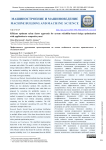
Статья научная
Introduction. The integration of reliability and optimization concepts seeks to design structures that should be both economic and reliable. This model is called Reliability-Based Design Optimization (RBDO). In fact, the coupling between the mechanical modelling, the reliability analyses and the optimization methods leads to very high computational cost and weak convergence stability. Materials andMethods. Several methods have been developed to overcome these difficulties. The methods called Reliability Index Approach (RIA) and Performance Measure Approach (PMA) are two alternative methods. RIA describes the probabilistic constraint as a reliability index while PMA was proposed by converting the probability measure to a performance measure. An Optimum Safety Factor (OSF) method is proposed to compute safety factors satisfying a required reliability level without demanding additional computing cost for the reliability evaluation. The OSF equations are formulated considering RIA and PMA and extended to multiple failure case.Research Results...
Бесплатно
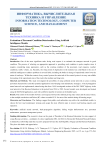
Evaluation of pavement condition deterioration using artificial intelligence models
Статья научная
Introduction. One of the most significant tasks facing road experts is to maintain the transport network in good condition. The process of selecting an appropriate approach to providing such condition is quite complex since it requires considering many parameters, such as the existing condition of the pavement, road category, weather conditions, traffic volume, etc. Recently, the rising trend of digitization in the industry has contributed to the use of artificial intelligence to address problems in several fields, including the bodies in charge of operational control over the status of roadways. Within the context of any control system, the main task of the control system is to carry out reliable forecasting of the operational state of the road in the medium and long term.Materials and Methods. This study investigated the possibility of using artificial neural networks to assess existing pavement characteristics and their potential application in developing road maintenance strategies. A back-propagation neural network was implemented, trained using data from 1,614 investigated sections of the M4 «DON» highway in the road network of the Russian Federation in the period from 2014 to 2018. Several models were developed and trained using the MATLAB application, each with a different number of neurons in the hidden layers.Results. The results of the models showed a convergence between the inferred paving state values and the actual values, as the multiple correlation coefficient (R2) values exceeded 92 % for most of the models during all learning stages.Discussion and Conclusions. The findings suggest that public road authorities may utilize the established models to choose the best road maintenance strategy and assign the most efficient steps to restore road bearing capacity and operation.
Бесплатно
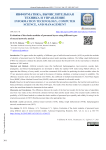
Evaluation of the elastic modulus of pavement layers using different types of neural networks models
Статья научная
Introduction. This paper studies the capability of different types of artificial neural networks (ANN) to predict the modulus of elasticity of pavement layers for flexible asphalt pavement under operating conditions. The falling weight deflectometer (FWD) was selected to simulate the dynamic traffic loads and measure the flexural bowls on the road surface to obtain the database of ANN models.Materials and Methods. Artificial networks types (the feedforward backpropagation, layer-recurrent, cascade back- propagation, and Elman backpropagation) are developed to define the optimal ANN model using Matlab software. To appreciate the efficiency of every model, we used the constructed ANN models for predicting the elastic modulus values for 25 new pavement sections that were not used in the process of training, validation, or testing to ensure its suitability. The efficiency measures such as mean absolute error (MAE), the coefficient of multiple determinations R2, Root Mean Square Error (RMSE), Mean Absolute Percent Error (MAPE) values were obtained for all models results.Results. Based on the performance parameters, it was concluded that among these algorithms, the feed-forward model has a better performance compared to the other three ANN types. The results of the best four models were compared to each other and to the actual data obtained to determine the best method.Discussion and Conclusions. The differences between the results of the four best models for the four types of algorithms used were very small, as they showed the closeness between them and the actual values. The research results confirm the possibility of ANN-based models to evaluate the elastic modulus of pavement layers speedily and reliably for using it in the structural assessment of (NDT) flexible pavement data at the appropriate time.
Бесплатно
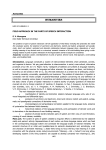
Field approach in the parts of speech interaction
Статья научная
The problems of parts of speech interaction with the application of field theory revealing the systematic ties within the vocabulary system, the existence of synchronic and diachronic, implicit and explicit, syntagmatic and paradigmatic, direct and indirect, motivated and idiomatic relationships between language items, dependence of word-building meaning of any derived word on a structural, semantic character of its word-building bases giving a wideranging analysis of parts of speech interaction in the linguacreative activity of people are considered.
Бесплатно
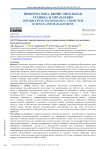
GATCGGenerator: новый генератор для создания квазислучайных нуклеотидных последовательностей
Статья научная
Введение. В последние десятилетия знания о ДНК все шире применяются для решения небиологических задач (вычисления с помощью ДНК, долговременное хранение информации). В первую очередь речь идет о случаях, когда необходимо подобрать искусственные нуклеотидные последовательности. Для их создания используются специальные программы. Однако существующие генераторы не учитывают физико-химические свойства ДНК и не позволяют получать последовательности с явно выраженной «небиологической» структурой. Фактически они генерируют последовательности, распределяя нуклеотиды случайным образом. Целью данной работы является создание генератора квазислучайных последовательностей с особой нуклеотидной структурой. Он должен учитывать некоторые физико-химические особенности нуклеотидных структур и будет задействован при хранении небиологической информации в ДНК.Материалы и методы. Описано новое программное обеспечение GATCGGenerator для генерации квазислучайных последовательностей нуклеотидов. Оно предоставляется как SaaS (от англ. software as a service - программное обеспечение как услуга), что обеспечивает его доступность с разных устройств и платформ. Программа генерирует последовательности определенной структуры с учетом гуанинцитозинового (GC) состава и содержания динуклеотидов. Представлена работа алгоритма новой программы. Требования к сгенерированным нуклеотидным последовательностям заданы с помощью чата в «Телеграм» (Telegram), наглядно показано взаимодействие с пользователем. Определены и обобщены различия входных параметров и получаемых в результате работы программы конкретных нуклеотидных структур. Также в сопоставлении даны временные затраты генерации последовательностей при различных входных данных. Изучены короткие последовательности, различающиеся по типу, длине, GC-составу и содержанию динуклеотидов. В табличном виде показано, как в этом случае соотносятся входные и выходные параметры.Результаты исследования. Созданное программное обеспечение сравнили с существующими генераторами нуклеотидных последовательностей. Установлено, что генерируемые последовательности отличаются по структуре от известных ДНК-последовательностей живых организмов, а значит, могут быть использованы в качестве вспомогательных или маскирующих олигонуклеотидов, пригодных для молекулярно-биологических манипуляций (например - реакции амплификации), а также для хранения в молекулах ДНК небиологической информации (изображений, текстов и т. д.). Предложенное решение дает возможность формировать специфические последовательности длиной от 20 до 5 000 нуклеотидов с заданным числом динуклеотидов и без гомополимерных участков. Более жесткие условия генерации снимают известные ограничения и позволяют создавать квазислучайные последовательности нуклеотидов по заданным входным параметрам. Кроме количества и длины последовательностей можно заранее определить GC-состав, содержание динуклеотидов и природу нуклеиновой кислоты (ДНК или РНК).Приводятся примеры коротких последовательностей, различающихся по длине, GC-составу и содержанию динуклеотидов.Полученные 30-нуклеотидные последовательности прошли проверку. Установлено отсутствие 100-процентной гомологии с известными ДНК-последовательностями живых организмов. Максимальное совпадение наблюдалось для сгенерированных последовательностей длиной 25 нуклеотидов (сходство около 80 %). Таким образом доказано, что GATCGGenerator может с высокой эффективностью генерировать небиологические нуклеотидные последовательности.Обсуждение и заключение. Новый генератор позволяет создавать нуклеотидные последовательности in silico с заданным GC-составом. Решение дает возможность исключить гомополимерные фрагменты, что качественно улучшает физико-химическую стабильность последовательностей.
Бесплатно
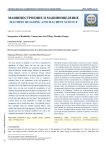
Integration of reliability concept into soil tillage machine design
Статья научная
The main interest of designers is not only to determine the amplitudes of tillage forces but also the type of their distributions under different soil mechanical properties with object of achieving reliable designs. Whereas, the deterministic design approach consists in achieving designs without considering the randomness of the design parameters that may lead to non reliable designs. In this work, we establish a statistical study on the randomness of the soil properties in collaboration with Cranfield University. This new study can be considered as a useful database for agricultural equipment design fields. Here, we take into account the uncertainties of soil mechanical properties that have big effects on tillage forces. The tillage forces are calculated in accordance with analytical model of McKyes and Ali with some modifications to include the effect of both soil-metal adhesion and tool speed. The distributions of soil-tool forces are next established to design soil tillage equipments such as shank chisel plow. The reliability index is then calculated using two deferent methods (Monte Carlo method and Hasofer and Lind approach). The Hasofer and Lind approach provides the structural reliability level with a low computing time relative to the Monte Carlo approach
Бесплатно

